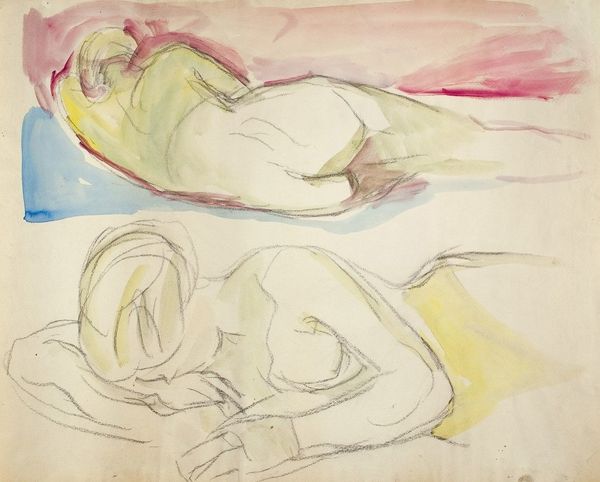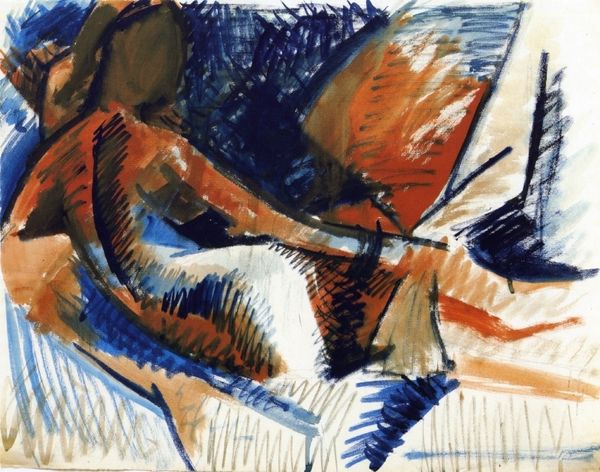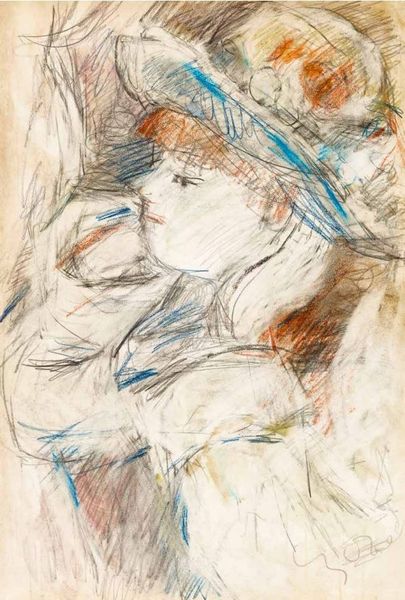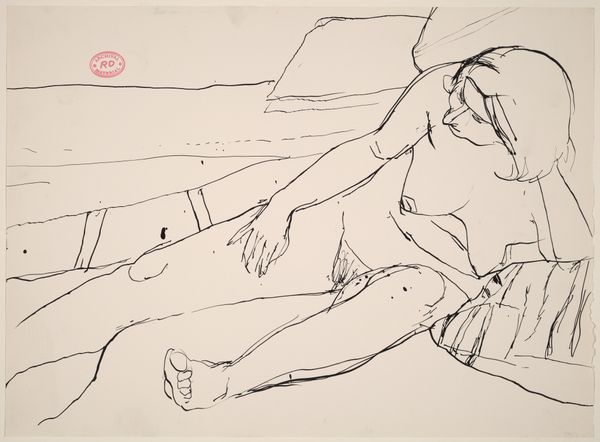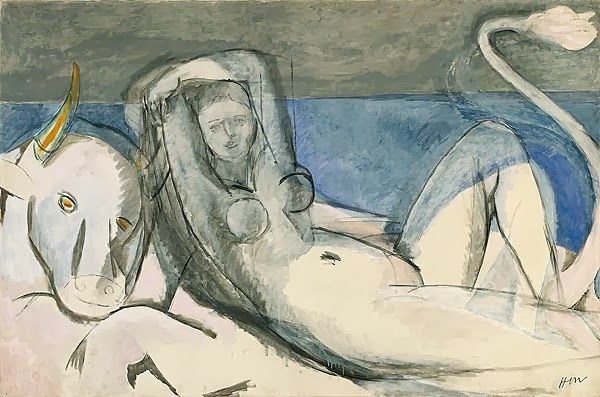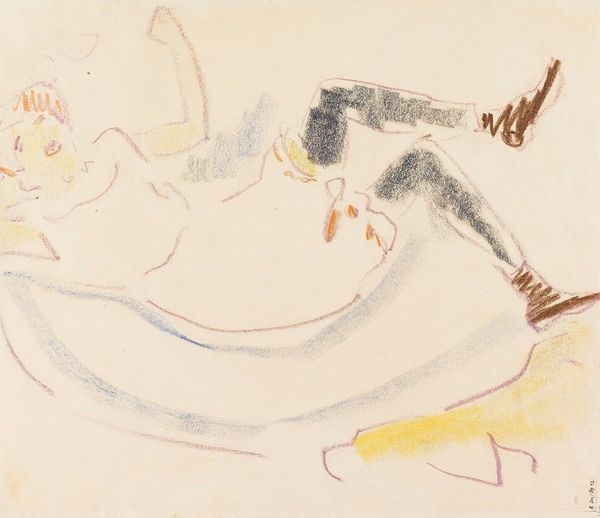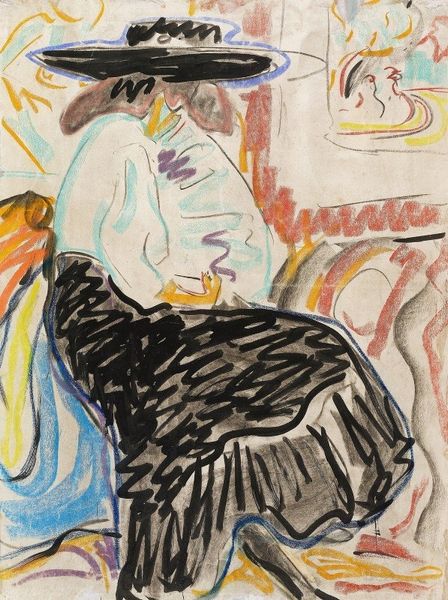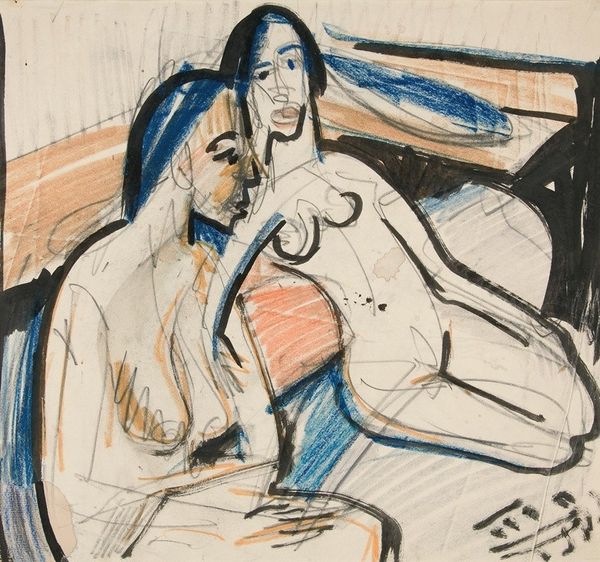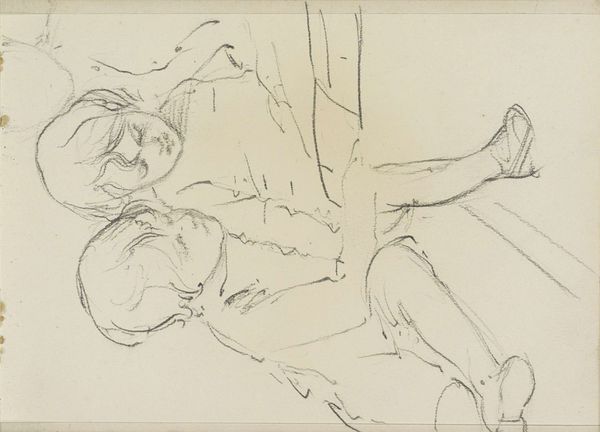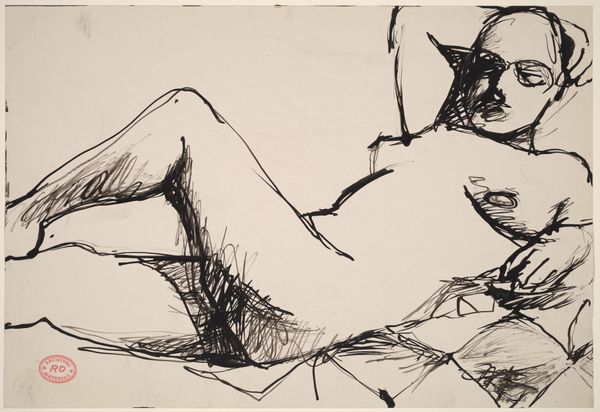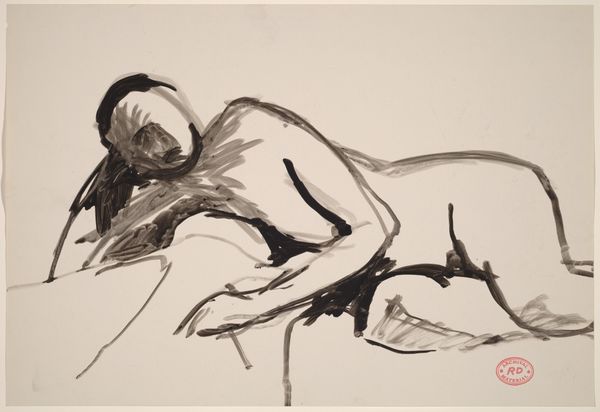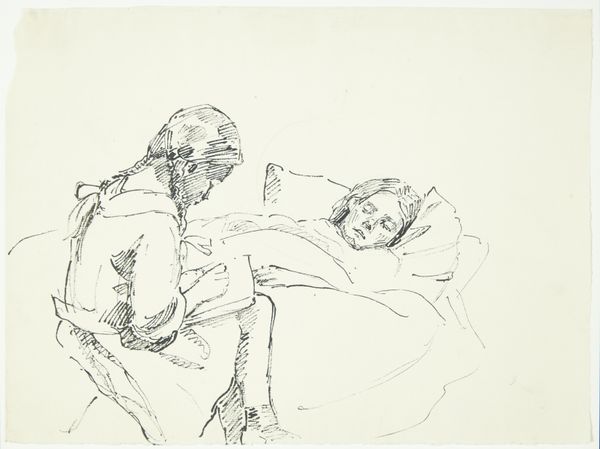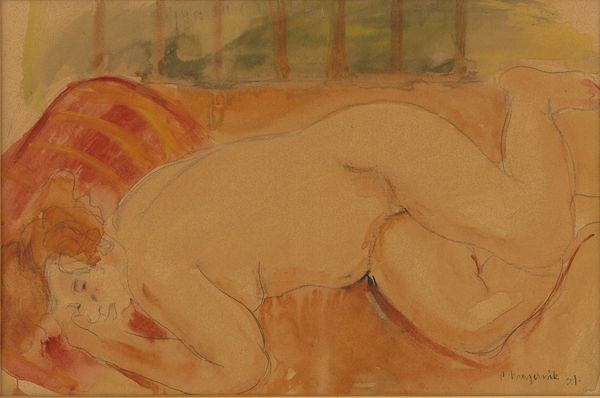
drawing, paper, ink
portrait
drawing
figuration
paper
oil painting
ink
intimism
expressionism
line
portrait drawing
nude
Copyright: Public Domain: Artvee
Curator: Take a moment to regard Edvard Munch’s “Man and Woman,” a work he explored between 1912 and 1915 using ink and watercolor on paper. What strikes you? Editor: It has such an unsettling tenderness. The female figure almost seems to be surrendering, while the male figure… towers? Dominates? There's something unequal about the relationship immediately apparent. Curator: Munch often circled back to themes of intimacy and anxiety, didn’t he? I think there is something both revealing and concealing happening in his imagery, always probing the psyche. The raw lines here—what do they convey to you in this piece? Editor: Unease, mostly. I think it shows us a really raw vision of gendered dynamics in a space that should be one of solace. You have to think about the political movements brewing at the time Munch was making art, as well: the rise of suffragism and broader feminist awareness, paired with a lot of anxiety about that social shift. Curator: It is compelling how his linework can both simplify and intensify a narrative. In many cultures throughout history, paired figures such as these often represented fertility and partnership. Do you think this work shares any symbols from such origins, perhaps disrupted or reworked? Editor: The female figure looks passive and the lines around the male are rough, maybe even aggressive. We can trace some really specific anxieties and fears here in how Munch presents a gendered power dynamic, specifically when bodies are closest, when they’re supposed to be equal and unified. Curator: Absolutely. This feels more about dissonance than harmony. I am compelled by the sense of unmediated emotionality—the directness of the expression seems very honest. Editor: Which is often the point of expressionism as a whole, yes? But it’s that very directness that implicates us; this isn’t just a portrait of intimacy, it’s an uncomfortable exploration of the self that, inevitably, makes me consider the politics of my own relationships. Curator: Looking at “Man and Woman” alongside the span of Munch's work allows us to meditate on continuity, transformation, and the persistence of certain themes across time. Editor: It's a powerful testament to how art can encapsulate the mood of not just an individual, but also the wider cultural conversations happening.
Comments
No comments
Be the first to comment and join the conversation on the ultimate creative platform.
